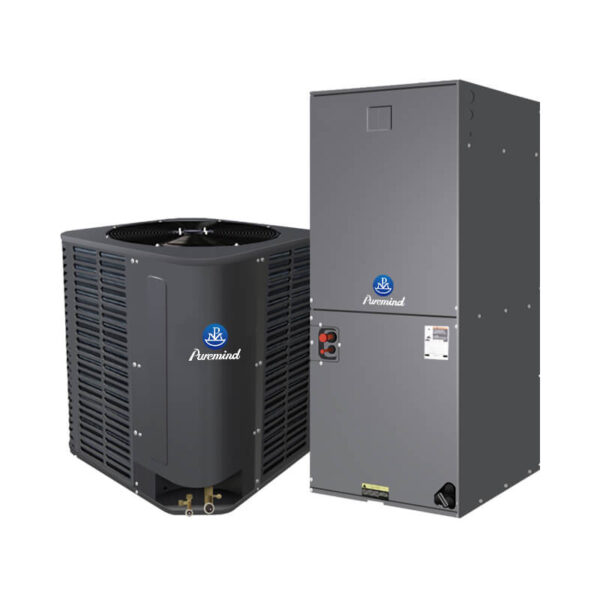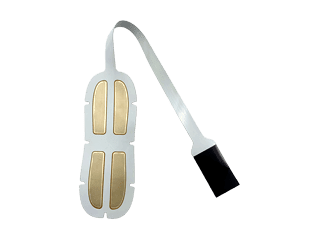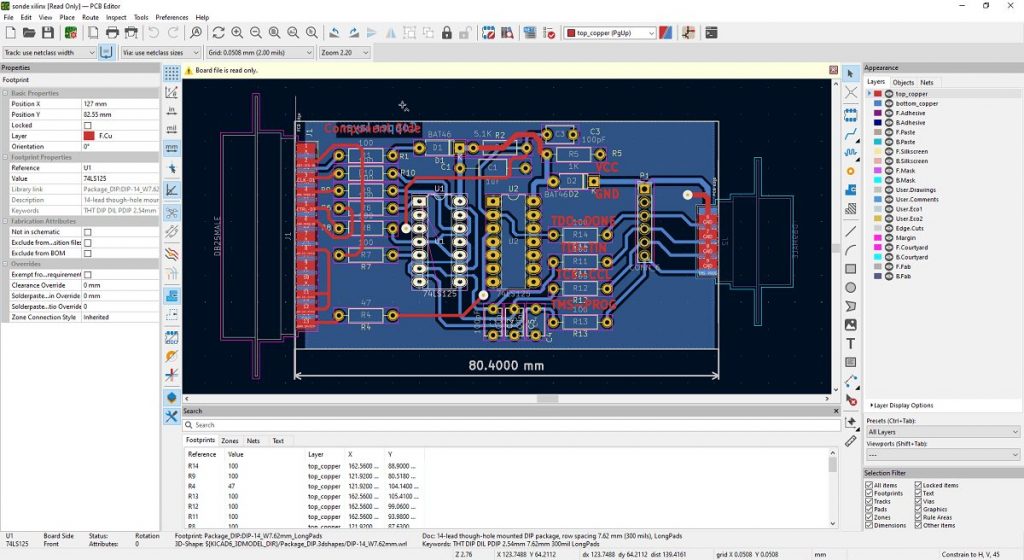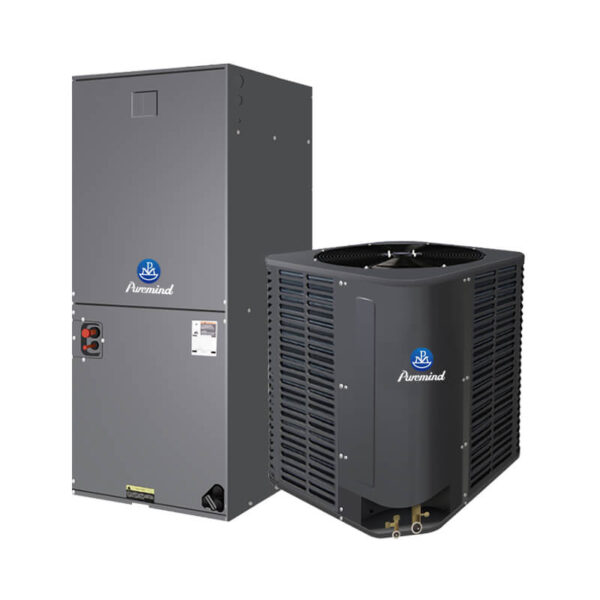There are many kinds of refrigeration methods, such as gas expansion refrigeration, liquid gasification refrigeration, vortex tube refrigeration and thermoelectric refrigeration. Among them, liquid gasification refrigeration is the most widely used, and its working principle is to realize refrigeration by using the heat absorption of liquid gasification.In addition to these aspects, industrial cooling systems The performance in other aspects is also relatively good, which has attracted everyone’s attention and research. https://puremind.com/product-category/puremind-air-conditioner/industrial-chiller/
1, the working principle of air conditioning (mainly refrigeration, heating on the contrary):
The high-temperature and high-pressure refrigerant discharged from the compressor flows through the outdoor heat exchanger through the four-way valve, and dissipates heat to the outdoor air through heating transfer, and the refrigerant changes from gaseous state to liquid state-throttles and depressurizes through capillary (or solenoid valve)-one-way valve-filter-two-way valve (outdoor high-pressure pipe)-enters the indoor heat exchanger to absorb heat (realize refrigeration)-outdoor three-way valve (outdoor low-pressure pipe). Complete a single-loop refrigeration cycle.
2. Types of components in refrigeration system:
The air conditioning refrigeration system is mainly composed of four parts and some auxiliary equipment in the refrigeration system.
The four major pieces are:
compressor
condenser
Throttle mechanism
Evaporator composition.
Auxiliary equipment:
Oil separator;
Drying filter;
Liquid storage tank;
Electromagnetic four-way reversing valve;
Solenoid valve; Check valve
3, the working principle of each component
Compressor: As the “heart” of refrigeration system, it has an important influence on the performance, noise, energy consumption, vibration and service life of air conditioning. According to the principle of thermodynamics, it can be divided into volumetric type and velocity type.
Volumetric type: a certain volume of gas is sucked into the cylinder and the internal volume of the cylinder is changed to realize gas compression and forced discharge.
Speed type: make the inhaled gas get a certain speed, and then slow down, so that kinetic energy can be converted into pressure energy and then discharged. The growth of gas is converted from speed.
one
Scroll compressor: It is formed by meshing two vortexes of stator and rotor.
Rotor compressor: it consists of spindle with eccentric wheel, cylinder, sleeve, air inlet, slide plate, spring, exhaust valve and exhaust port.
Condenser: The condenser transfers the refrigerating capacity of the evaporator in the refrigeration system to the environmental medium (cooling water or air) together with the power consumption of the compressor. According to cooling, it can be divided into air-cooled type, water-cooled type and evaporative type. When cooling, it mainly radiates heat to the outside, and when heating, it absorbs heat to the outside.
Evaporator: The main function of the evaporator is to boil and evaporate the low-temperature and low-pressure refrigerant liquid that has entered the throttle in the evaporator, absorb the heat of the cooled medium, and then become low-pressure saturated (usually overheated) vapor itself, which is continuously sucked away by the compressor. In other words, the evaporator is a heat exchange device that absorbs heat (that is, outputs cold energy).
Throttle element: Throttle element is one of the four main elements in the refrigeration system. Its main function is to throttle and reduce the pressure of high-pressure liquid refrigerant, ensure the pressure difference between condenser and evaporator, and make the refrigerant entering the evaporator absorb heat and evaporate at the required low pressure, thus achieving the purpose of refrigeration and cooling. Adjust the refrigerant flow into the evaporator to adapt to the load change of the evaporator and make the system run normally.
Capillary: It is a very thin tube, usually with an inner diameter of 0.5 ~ 2.5 mm and a length of 1 ~ 5 m.. When the refrigerant flows in the tube, it is necessary to overcome the resistance in the tube, which naturally produces a certain pressure drop.
Capillary characteristics: Because it is in the normally open state, when the compressor stops, the high and low pressure can be quickly balanced, which is conducive to the compressor starting again. Simple structure, convenient manufacture and low price. For the heat pump system, there is no import and export problem in the throttling process of refrigerant in capillary [this article source: refrigeration encyclopedia WeChat official account” target=_blank>. Using capillary refrigeration system, the performance of the unit is very sensitive to the refrigerant charge. When the operating conditions of the refrigeration system change, the capillary tube has poor ability to adjust the refrigerant flow. Due to the small inner diameter of capillary and long pipeline, it is easy to be blocked, so attention should be paid to the drying and cleaning of the system. Generally, a dry filter is set in front of the capillary to prevent clogging.
Thermal expansion valve: the regulating valve that controls the liquid supply of evaporator, and it is also the throttle valve of refrigeration device. Thermal expansion valve uses the change of superheat of refrigerant at evaporator outlet to adjust the flow. According to different structures, it can be divided into internal balance type and external balance type.
Disadvantages of thermal expansion valve: low control precision and limited adjustment range. The diaphragm deformation of valve body is limited, which makes the change range of valve needle opening smaller, so the adjustment range of flow is small. When large flow regulation is required, it cannot be met. The high-temperature gas at the place where the signal feedback has a lag evaporator must first heat the shell of the temperature sensor, which has a large thermal inertia, leading to the lag of the reaction.
2
Electronic expansion valve: the application of electronic expansion valve overcomes the shortcomings of thermal expansion valve and provides conditions for the intelligence of refrigeration device. The electric signal generated by adjusting parameters is mainly used to control the voltage or current applied to the expansion valve, so as to achieve the purpose of adjustment, so that the control system of the electronic expansion valve is complicated and the price is high.
Electronic expansion valve classification:
Electromagnetic electronic expansion valve;
Electric electronic expansion valve.
4. Auxiliary equipment of refrigeration system
Oil separator: The high-pressure gas (gaseous working medium and lubricating oil) from the compressor enters the oil separator to separate the lubricating oil from the working medium gas and flows down along the inner wall of the cylinder. The working gas is led out of the oil separator from the central pipe through the porous baffle. The separated lubricating oil is concentrated in the lower part of the oil separator and can be discharged regularly, or the lubricating oil can be automatically returned to the crankcase of the compressor by using the ball valve.
Drying filter: The function of drying filter is to absorb moisture in refrigeration system, prevent impurities in the system from passing through, and prevent the pipeline of refrigeration system from being blocked by ice and dirt. Because the most easily blocked part of the system is the capillary (or expansion valve), the drying filter is usually installed between the condenser and the capillary (or expansion valve).
Liquid storage tank: During the operation of the refrigeration system, the circulating amount of refrigerant in the system will change due to the change of working conditions or the adjustment of refrigeration capacity. Setting the liquid storage tank can balance and stabilize the refrigerant circulation in the system by using the liquid storage capacity of the liquid storage tank, so that the refrigeration system can be in normal operation. In addition, when a component in the refrigeration system fails and needs to be dismantled and repaired, the system refrigerant can be recovered to the liquid storage tank through certain operation methods.
The liquid storage tank is generally arranged between the condenser and the throttling element, so that the refrigerant liquid in the condenser can smoothly enter the liquid storage tank. The position of the liquid storage tank should be lower than that of the condenser.
Electromagnetic four-way reversing valve: after the electromagnetic coil is energized, it changes the action direction of the valve block in the valve body and changes the flow direction of the refrigerant. So as to achieve the purpose of cooling or heating.
three
Solenoid valve: Solenoid valve is usually installed in front of the expansion valve to directly control the amount of refrigerant entering the evaporator. It can also be installed before the compressor unloading cylinder to control the unloading of the compressor cylinder.
There are two kinds:
Direct opening and closing solenoid valve;
Indirect solenoid valve.
One-way valve: The one-way valve is usually connected in parallel with the auxiliary capillary, and the two are connected in series with the main capillary. One-way valve is a tubular element with a movable spherical or hemispherical plug made of stainless steel or nylon. Combined with capillary tube, it can adapt to two different operating conditions of refrigeration and heating.
5. Types and States of Refrigerant
Air conditioning refrigerants mainly include R22, R410A and R32.
R22 is a medium-temperature refrigerant, with the standard of -40.8 degrees, the solubility of water in R22 is very small, and it is mutually soluble with mineral oil, and R22 does not burn or explode, with little toxicity and strong permeability.
R410A is a HFC refrigerant which is composed of R32 and R125 by 50% and 50% by mass. [This article comes from WeChat official account, a refrigeration encyclopedia” target=_blank>, which belongs to a near azeotrope, and its thermodynamic properties are very close to that of a single refrigerant. Compared with R22, R410A’s condensation pressure is increased by 1.6 times, and it is a high-pressure refrigerant, so it is necessary to improve the compression strength of the system.
R32 is the abbreviation of difluoromethane, which is a kind of coolant with zero ozone loss potential. It is a gas at room temperature and a colorless and transparent liquid under its own pressure. It is soluble in oil and insoluble in water, and it is an energy-saving and carbon-reducing environment-friendly non-toxic refrigerant, but it is flammable and explosive!
6. Refrigerant status
Saturated refrigerant: Vapor-liquid conversion in saturated refrigerant is in transport equilibrium, and liquid and gas at this time are in saturation.
There is a one-to-one correspondence between saturation temperature and saturation pressure, and the saturation pressure increases with the increase of saturation temperature, and one of them will change and the other will change accordingly. In the system, the refrigerant in the evaporator absorbs heat and the refrigerant in the condenser releases heat, where the refrigerant is saturated.
Superheat: Under a certain pressure, the temperature of superheated steam exceeds the saturation temperature.
Overheating: the temperature of refrigerant vapor in superheated refrigerant is higher than the saturation temperature under the corresponding saturation pressure, and the liquid refrigerant will overheat after evaporation. In the case of overheating, there is no one-to-one correspondence between the temperature and pressure of refrigerant gas.
Near the outlet of the evaporator, the refrigerant continues to absorb heat after complete evaporation and becomes superheated refrigerant with a temperature higher than the saturation temperature. The refrigerant enters the compressor through the suction pipe in case of overheating.
Supercooling: The liquid temperature of the supercooled refrigerant is lower than the saturation temperature at the corresponding saturation pressure, and supercooling will only occur when there is no steam in the fluid refrigerant. In the case of supercooling, there is no one-to-one correspondence between the temperature and pressure of refrigerant liquid.
Between the outlet of the condenser and the throttle valve, the refrigerant may continue to cool exothermically and become supercooled after condensing into saturated liquid.





